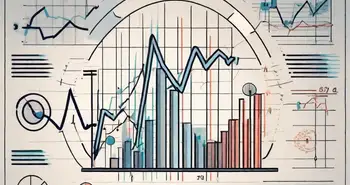The Ultimate Guide to Market Trade: Strategies, Tips, and Trends

In today's fast-paced and ever-evolving world, market trade has become an essential aspect of modern business. Whether you're a seasoned trader or just starting out, understanding the intricacies of market trade is crucial for success. In this comprehensive guide, I will take you through everything you need to know about market trade strategies, tips, and current trends. So, let's dive in and unlock the secrets of this dynamic field.
Understanding Market Trade
To effectively navigate the world of market trade, it is crucial to have a solid understanding of its basic concepts. Market trade refers to the buying and selling of financial instruments such as stocks, bonds, commodities, and currencies. It involves analyzing market conditions, identifying profitable opportunities, and executing trades to achieve desired financial outcomes.
Market trade is a dynamic and ever-evolving field that offers individuals the opportunity to participate in the global economy. By engaging in market trade, investors and traders can potentially generate income, build wealth, and diversify their investment portfolios.
Basics of Market Trade
When getting started in market trade, it's important to familiarize yourself with some fundamental concepts. These include concepts such as supply and demand, market order types, and the different types of financial instruments available for trade. Understanding these basics will lay a strong foundation for your trading journey.
Supply and demand play a crucial role in market trade. The price of a financial instrument is determined by the balance between the quantity of buyers and sellers in the market. When demand exceeds supply, prices tend to rise, while an oversupply can lead to price declines.
Market order types are another important aspect of market trade. These order types include market orders, limit orders, stop orders, and stop-limit orders. Each order type has its own purpose and execution rules, allowing traders to enter or exit positions at specific prices or under certain conditions.
Financial instruments available for trade encompass a wide range of options. Stocks represent ownership in a company, while bonds are debt instruments issued by governments or corporations. Commodities include physical goods like gold, oil, and agricultural products. Currencies, on the other hand, are traded in the foreign exchange market.
Key Terms in Market Trade
Like any specialized field, market trade comes with its own set of jargon. To communicate effectively and make informed decisions, it's essential to grasp key terms such as bid-ask spread, leverage, margin, and stop-loss order. These terms may seem daunting at first, but with time and practice, they will become second nature to you.
The bid-ask spread refers to the difference between the highest price a buyer is willing to pay (bid) and the lowest price a seller is willing to accept (ask). This spread represents the cost of executing a trade and can vary depending on market conditions and liquidity.
Leverage allows traders to control a larger position with a smaller amount of capital. It amplifies both potential profits and losses, making it a powerful tool that requires careful risk management. Traders can use leverage to enhance their trading strategies and increase their exposure to various financial instruments.
Margin is the amount of money that traders need to deposit with their brokers to open and maintain positions. It serves as collateral and allows traders to access leverage. Margin requirements vary depending on the financial instrument and the broker's policies.
A stop-loss order is an order placed to automatically sell a position if it reaches a specified price level. It is used to limit potential losses and protect against adverse market movements. Traders often set stop-loss orders to manage risk and ensure that their losses are controlled.
As you delve deeper into the world of market trade, you will encounter additional terms and concepts that will expand your knowledge and understanding. Continuous learning and staying up-to-date with market trends and developments are essential to thrive in this dynamic field.
Developing a Market Trade Strategy
Success in market trade does not rely on luck alone, but rather on a well-thought-out strategy. A solid strategy provides a roadmap for your trading decisions and minimizes risks while maximizing profits.
When it comes to market trading, having a robust strategy is crucial as it prevents impulsive and emotional decisions that can lead to losses. A well-defined strategy allows you to stick to your plan, even in times of market volatility. It also helps you allocate your resources effectively and improves your chances of achieving consistent profits.
Importance of a Solid Strategy
Developing a market trade strategy is not just a matter of preference; it is a necessity. Without a solid strategy, you are essentially gambling with your investments. A well-planned strategy provides you with a clear direction and helps you make informed decisions based on thorough analysis and research.
One of the significant advantages of having a strategy is that it prevents emotional trading. Emotions such as fear and greed can cloud your judgment and lead to impulsive actions. By having a predefined strategy, you can avoid making decisions based on short-term market fluctuations and focus on the bigger picture.
Furthermore, a solid strategy helps you manage risk effectively. It allows you to set clear risk tolerance levels and implement risk management techniques such as stop-loss orders. By defining your risk parameters in advance, you can protect your capital and minimize potential losses.
Steps to Creating Your Strategy
Creating a winning trading strategy involves careful analysis, research, and review. Here are some vital steps to follow:
- Define your trading goals and objectives: Before developing a strategy, it is essential to determine what you want to achieve as a trader. Are you looking for short-term gains or long-term growth? Clarifying your goals will help shape your strategy accordingly.
- Analyze your risk tolerance: Understanding your risk tolerance is crucial in determining the level of risk you are willing to take on. This assessment will influence the types of assets you trade, the position sizes you take, and the risk management techniques you employ.
- Study historical price patterns and market trends: Analyzing historical price data and market trends can provide valuable insights into potential future price movements. By identifying patterns and trends, you can make more informed trading decisions.
- Select suitable trading indicators and tools: There are numerous technical indicators and tools available to traders. It is essential to choose the ones that align with your trading style and complement your strategy. These indicators can help you identify entry and exit points, confirm trends, and generate trading signals.
- Outline your entry and exit strategies: Defining clear entry and exit strategies is crucial for executing trades effectively. This includes determining the conditions under which you will enter a trade, as well as the criteria for exiting a trade, whether it is based on profit targets or stop-loss levels.
- Backtest your strategy and make necessary adjustments: Before implementing your strategy in live trading, it is advisable to backtest it using historical data. This process involves simulating trades based on your strategy's rules and analyzing the results. Backtesting allows you to identify any flaws or weaknesses in your strategy and make necessary adjustments.
- Continuously evaluate and refine your strategy: Markets are dynamic and ever-changing. What works today may not work tomorrow. It is crucial to continuously evaluate the performance of your strategy and make adjustments as needed. Regularly reviewing your strategy ensures that it remains effective in different market conditions.
Remember, a good strategy is not static. It should evolve and adapt to changing market conditions to ensure continued success. By following these steps and continuously refining your strategy, you can increase your chances of achieving consistent profits in market trading.
Tips for Successful Market Trading
Whether you're a novice or an experienced trader, there's always room to enhance your trading skills. Here are some tips to take your market trading game to the next level.
Essential Tips for Beginners
For those starting their trading journey, here are some crucial tips to keep in mind:
- Start with a demo account to practice trading without real money
- Focus on one market or instrument to develop expertise
- Manage your risk by setting appropriate stop-loss orders
- Stay disciplined and stick to your trading plan
- Continuously educate yourself and stay updated on market news
Advanced Tips for Experienced Traders
If you're an experienced trader looking to refining your skills, consider the following:
- Diversify your portfolio to spread risk
- Implement advanced trading strategies like options or futures
- Monitor market sentiment and news impacting your trades
- Consider using technical analysis to identify entry and exit points
- Practice proper risk management by adhering to position sizing rules
Current Trends in Market Trade
Market trade is a dynamic and ever-changing landscape. Staying ahead of the latest trends can give you a competitive edge. Let's explore some current trends shaping the world of market trade.
Emerging Trends in 2022
In 2022, we are witnessing several emerging trends that are reshaping the market trade landscape. Some notable trends include:
- Increased adoption of cryptocurrency trading
- Growing interest in sustainable and ESG investing
- Rise of algorithmic trading and artificial intelligence
Predicted Trends for the Future
Looking ahead, experts predict several trends that will shape the future of market trade:
- Growth of decentralized finance (DeFi) and blockchain technology
- Integration of social and copy trading platforms
- Enhanced focus on regulatory compliance and investor protection
Risk Management in Market Trade
Managing risk is an integral part of successful market trade. Understanding and effectively managing risk is crucial for protecting your capital and preserving long-term profitability.
Understanding Risk in Market Trade
Every trade comes with a certain level of risk. Market volatility, economic factors, and unexpected events can lead to potential losses. It's important to assess and quantify the risks associated with each trade and implement appropriate risk management strategies.
Techniques for Effective Risk Management
Implementing effective risk management techniques can help mitigate potential losses. Some techniques include:
- Setting stop-loss orders to limit losses
- Using proper position sizing to ensure risk is within acceptable limits
- Diversifying your portfolio to spread risk
- Continuously monitoring and adjusting your trades as market conditions change
Remember, risk management should be an ongoing process. Regularly review and fine-tune your risk management strategies to adapt to changing market conditions.
Now that you've equipped yourself with a wealth of knowledge about market trade strategies, tips, and trends, it's time to put your learnings into practice. Start by defining your goals, creating a solid trading strategy, and continuously educating yourself. With dedication, discipline, and a clear vision, you can embark on a lucrative journey in the world of market trade.
FAQs
What is market trade?
Market trade refers to the buying and selling of financial instruments such as stocks, bonds, commodities, and currencies.
Why is having a trading strategy important?
A trading strategy provides a roadmap for your trading decisions, helping you make informed choices and maximize profits while minimizing risks.
What are some essential tips for beginners in market trade?
Some essential tips for beginners include starting with a demo account, focusing on one market or instrument, managing risk, and staying disciplined.
What are some advanced tips for experienced traders?
Experienced traders can enhance their skills by diversifying their portfolio, implementing advanced trading strategies, and monitoring market sentiment and news impacting their trades.
What are the current trends in market trade?
Current trends in market trade include increased adoption of cryptocurrency trading, growing interest in sustainable investing, and the rise of algorithmic trading and artificial intelligence.
How can I effectively manage risk in market trade?
Effective risk management techniques include setting stop-loss orders, using proper position sizing, diversifying your portfolio, and continuously monitoring and adjusting your trades.
As you consider the potential of stock trading and the broader cryptocurrency landscape, why not expand your investment horizon with Morpher? At Morpher.com, you can leverage the power of blockchain technology to trade across a multitude of asset classes, including cryptocurrencies, without the burden of fees or liquidity constraints. With the ability to engage in fractional investing, short selling, and up to 10x leverage, Morpher offers a unique and flexible trading experience that aligns perfectly with the innovative spirit of crypto mining. Take control of your investments with the safety of the Morpher Wallet and explore new market opportunities today. Sign Up and Get Your Free Sign Up Bonus to embark on a transformative trading journey with Morpher.

Disclaimer: All investments involve risk, and the past performance of a security, industry, sector, market, financial product, trading strategy, or individual’s trading does not guarantee future results or returns. Investors are fully responsible for any investment decisions they make. Such decisions should be based solely on an evaluation of their financial circumstances, investment objectives, risk tolerance, and liquidity needs. This post does not constitute investment advice.

Painless trading for everyone
Hundreds of markets all in one place - Apple, Bitcoin, Gold, Watches, NFTs, Sneakers and so much more.

Painless trading for everyone
Hundreds of markets all in one place - Apple, Bitcoin, Gold, Watches, NFTs, Sneakers and so much more.









